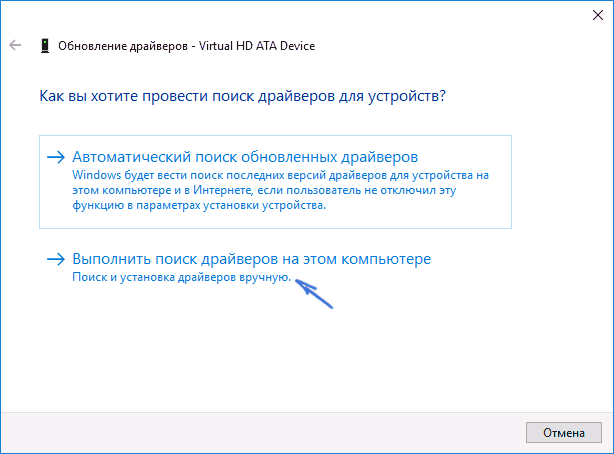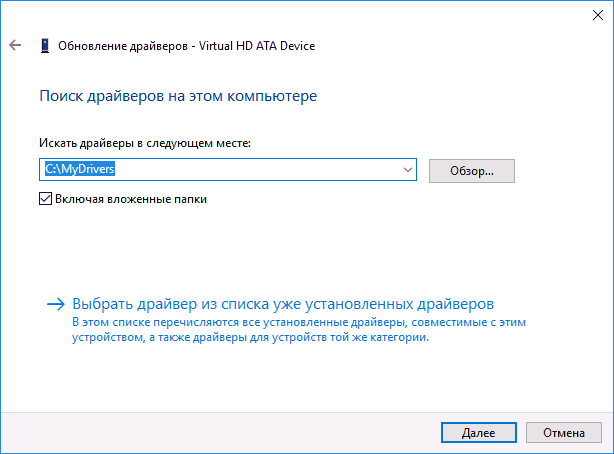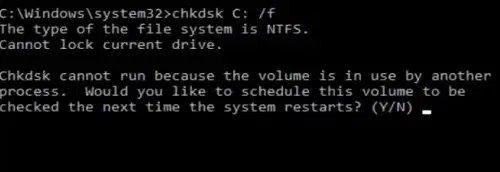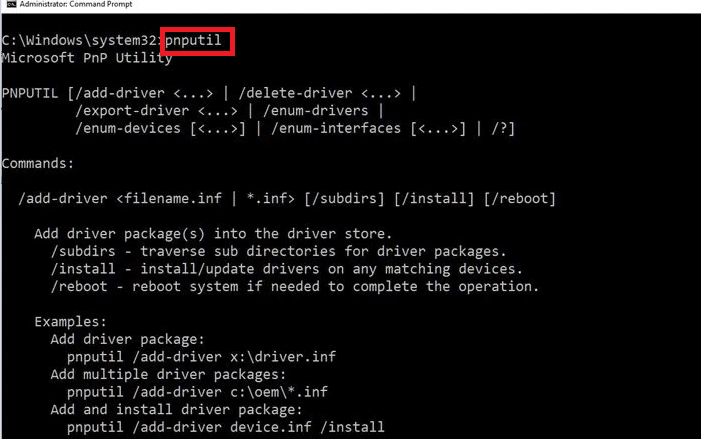Значительная часть проблем, связанных с работой Windows 10 после установки имеет отношение к драйверам устройств и, когда такие проблемы решены, а нужные и «правильные» драйверы установлены, имеет смысл создать их резервную копию для быстрого восстановления после переустановки или сброса Windows 10. О том, как сохранить все установленные драйверы, а затем — установить их и пойдет речь в этой инструкции. Также может оказаться полезным: Резервная копия системы Windows 10.
Примечание: существует множество бесплатных программ для создания резервных копий драйверов, таких как DriverMax, SlimDrivers, Double Driver и прочих Driver Backup. Но в этой статье будет описан способ, позволяющий обойтись без сторонних программ, только лишь встроенными средствами Windows 10.
Сохранение установленных драйверов с помощью DISM.exe
Инструмент командной строки DISM.exe (Deployment Image Servicing and Management) предоставляет пользователю самые обширные возможности — от проверки и восстановления системных файлов Windows 10 (и не только) до установки системы на компьютер.
В этом руководстве будем использовать DISM.exe для того, чтобы сохранить все установленные драйверы.
Шаги для сохранения установленных драйверов будут выглядеть следующим образом
- Запустите командную строку от имени Администратора (сделать это можно через меню правого клика по кнопке «Пуск», если у вас не отображается такой пункт, то введите «командная строка» в поиске на панели задач, после чего нажмите правой кнопкой по найденному пункту и выберите «Запустить от имени администратора»)
- Введите команду dism /online /export-driver /destination:C:\MyDrivers (где C:\MyDrivers папка для сохранения резервной копии драйверов, папка должна быть создана заранее вручную, например, командой md C:\MyDrivers) и нажмите Enter. Примечание: вы можете использовать любой другой диск или даже флешку для сохранения, не обязательно диск C.
- Дождитесь завершения процесса сохранения (примечание: не придавайте значения тому, что у меня на скриншоте сохранилось всего два драйвера — на реальном компьютере, а не в виртуальной машине, их будет больше). Драйверы сохраняются в отдельные папки с именами oem.inf под разными номерами и сопутствующими файлами.
Теперь все установленные сторонние драйверы, а также те, что были загружены из Центра обновлений Windows 10, сохранены в указанную папку и могут быть использованы для ручной установки через диспетчер устройств или, например, для интеграции в образ Windows 10 с помощью того же DISM.exe
Создание резервной копии драйверов с помощью pnputil
Еще один способ создания резервной копии драйверов — использования утилиты PnP, встроенной в Windows 7, 8 и Windows 10.
Для сохранения копии всех используемых драйверов выполните следующие шаги:
- Запустите командную строку от имени администратора и используйте команду
- pnputil.exe /export-driver * c:\driversbackup (в данном примере все драйверы сохраняются в папку driversbackup на диске C. Указанная папка должна быть создана заранее.)
После выполнения команды в заданной папке будет создана резервная копия драйверов, точно такая же, как и при использовании первого описанного способа.
Использование PowerShell для сохранения копии драйверов
И еще один способ выполнить то же самое — Windows PowerShell.
- Запустите PowerShell от имени администратора (например, используя поиск в панели задач, затем — правый клик по PowerShell и пункт контекстного меню «Запустить от имени администратора»).
- Введите команду Export-WindowsDriver —Online —Destination C:\DriversBackup (где C:\DriversBackup — папка для сохранения резервной копии, её следует создать еще до использования команды).
При использовании всех трех способов резервная копия будет одинаковой, тем не менее, знание о том, что таких способов более чем один может пригодиться в случае неработоспособности используемого по умолчанию.
Восстановление драйверов Windows 10 из резервной копии
Для того, чтобы заново установить все сохраненные таким образом драйверы, например, после чистой установки Windows 10 или ее переустановки, зайдите в диспетчер устройств (также можно сделать через правый клик по кнопке «Пуск»), выберите устройство, для которого нужно установить драйвер, кликните по нему правой кнопкой мыши и нажмите «Обновить драйвер».

После этого выберите «Выполнить поиск драйверов на этом компьютере» и укажите папку, где была сделана резервная копия драйверов, после чего нажмите «Далее» и установите нужный драйвер из списка.

Также вы можете интегрировать сохраненные драйверы в образ Windows 10 с помощью DISM.exe. Подробно описывать процесс в рамках данной статьи не стану, но вся информация доступна на официальном сайте Microsoft, правда, на английском: https://technet.microsoft.com/en-us/library/hh825070.aspx
Возможно, также будет полезным материал: Как отключить автоматическое обновление драйверов Windows 10.
Don’t know how to back up your drivers on Windows? Don’t worry! You’ve come to the right place. It’s very, very easy! After reading this article, you should be able to back up your drivers easily and quickly!
Try these methods
- Back up your drivers in Command Prompt
- Back up your drivers in Powershell
- How to restore a driver backup
- Back up and restore your drivers using Driver Easy
Method 1: Back up your drivers in Command Prompt
You can back up your drivers using DISM (Deployment Image Servicing and Management) tool.
As a command line tool built into Windows 8 and later versions of Windows systems, it is often used to service and prepare Windows images. As a nifty tool, it can also be used to scan and repair Windows images. And of course, it can also be used to back up your drivers! Here is how to do it:
- Create a new folder in your local disk drive (D:) or one of any other drives that have not installed Windows 10. Then rename it to Drivers Backup. In this example, I will create a folder in my local disk drive (D:) and call it Drivers Backup.
- On your keyboard, press the Windows logo key and R at the same time to open the Run dialog. Type cmd and then press Ctrl, Shift and Enter at the same time to run Command Prompt as administrator. You’ll be prompted for permission. Click Yes to open Command Prompt.
- In Command Prompt, type the following command line and press Enter:
dism /online /export-driver /destination:”D:\Drivers Backup”
NOTE: If you created the folder with the name “Drivers Backup” in your local disk drive (E:), you should type the command line dism /online /export-driver /destination:”E:\Drivers Backup”
- When the process is completed, you’ll see the message:
- Now you can go to the Drivers Backup folder to view the backup of all the drivers.
Method 2: Back up your drivers in Powershell
You can also back up your drivers in Powershell, but the command line is a little bit different. It is also very easy! Follow the instructions below to back up your drivers in Powershell.
Powershell is a command line tool similar to Command Prompt. It was initially developed by Microsoft and now it has become an open-source project. Powershell is not only available in Windows but also in Mac OS and Linux.
- Create a new folder in your local disk drive (D:) or one of any other drives that have not installed Windows 10. Then rename it to Drivers Backup. In this example, I will create a folder in my local disk drive (D:) and call it Drivers Backup.
- On your keyboard, press the Windows logo key and type powershell. In the list of search results, right-click Windows Powershell and select Run as administrator. You’ll be prompted for permission. Click Yes to run Powershell as administrator.
- In Powershell, type the following command line and press Enter:
Export-WindowsDriver -Online -Destination “D:\Drivers Backup”
NOTE: If you created the folder with the name “Drivers Backup” in your local disk drive (E:), you should type the command line Export-WindowsDriver -Online -Destination “E:\Drivers Backup”
- Wait until the process is completed.
- Now you can go to the Drivers Backup folder to view the backup of all the drivers.
How to restore a driver backup
In Device Manager, you can manually restore your drivers’ backups one by one. Here is how to do it:
- On your keyboard, press the Windows logo key and X at the same time. Then select Device Manager. You’ll be prompted for permission. Click Yes to open Device Manager.
- Right-click the device you want to restore a driver backup for, then select Update driver.
- In the pop-up window, select Browse my computer for driver software.
- Click Browse… to locate your Drivers Backup folder. Click the box next to Include subfolders. Then click Next.
- Windows will begin to search the Drivers Backup folder and restore the driver for this device.
- Close the window when the process is completed.
Method 3: Back up and restore your drivers using Driver Easy
If you don’t feel comfortable playing with those command lines, or if you don’t have time, patience or computer skills to back up, restore or update your drivers, you can, instead, do it automatically with Driver Easy.
Driver Easy is easy to use. What’s more, you don’t need to worry about making a mistake when you back up, restore and update your drivers. Driver Easy handles it all.
With the Pro version of Driver Easy, you can back up and restore your drivers easily and quickly!
- Download and install Driver Easy.
- Activate the Pro version of Driver Easy using your license key. If you don’t know how to do it, you can refer to the activation guide.
- In the Pro version of Driver Easy, click Tools.
To back up your drivers:
- In the Driver Backup window, select the drivers you want to back up by checking the box next to the device. The driver’s backup folder is located in your local disk drive (C:) by default. You can click Backup to… to change the path. Then click Start Backup to back up the drivers you select.
- Wait until the process is completed.
- When you see the following message, click OK. If you check the box next to Open backup folder, the backup folder will pop up after you click OK.
To restore your drivers:
- Run the Pro version of Driver Easy. Then click Tools.
- Click Driver Restore. You’ll be prompted for permission. Click Continue > Yes to open the Driver Restore window.
- In the Driver Restore window, click Browse… to select the .zip file of your drivers backup.
- Click Continue to restore your drivers.
- Click OK when it is completed.
Please contact Driver Easy’s support team at support@drivereasy.com if you need assistance.
Whether you’re doing a clean installation or reinstallation Windows 10, you always have to make sure to install device drivers to allow the operating system to communicate with the hardware and peripherals connected to your computer.
Nowadays, this isn’t much of an issue anymore, as Windows 10 can detect most of the drivers on your device automatically. In addition, you can always visit your device manufacturer’s support website to download the latest drivers.
However, there will be times when Windows 10 won’t be able to install certain drivers or your manufacturer will stop offering the driver for a particular device. Fortunately, Windows 10 includes a command to backup every driver installed on your computer, which you can use before reinstalling Windows 10.
In this guide, you’ll learn the steps to use Deployment Image Servicing and Management (DISM) command-line tool to create a backup of all the drivers on your device, and how you can restore them on Windows 10.
- Backup device drivers using Command Prompt
- Restore device drivers on Windows 10
To backup all the device drivers with DISM commands, use these steps:
-
Open File Explorer on Windows 10.
-
Create a new folder to store the backup with all the drivers (Ctrl + Shift + N).
-
Open Start.
-
Search for Command Prompt, right-click the top result, and select the Run as administrator option.
-
Type the following command and press Enter:
DISM /online /export-driver /destination:C:\DriverBackup
DISM backup drivers on Windows 10 Quick note: Change the
C:\DriverBackupwith the path to the folder where you want to store the backup. If you’re planning to reinstall the operating system, it’s recommended to save the driver backup to an external storage.
Once you complete the steps, DISM will look and make a copy of all the drivers stored in C:\Windows\System32\DriverStore. It’s important to point out that this method will only make a backup of those .inf drivers. Other drivers installed using an .msi or .exe package won’t get backed up.
Restore device drivers on Windows 10
You should be able to restore drivers on the new installation of Windows 10 using this command: DISM /online /Add-Driver /Driver:D:\DriverBackup /Recurse. However, every time you try the command you’ll get an error: 50 “This command can only be used with an Offline image.”
However, after reinstalling Windows 10, it’s likely that you’ll only need to install a few drivers as the operating system will detect most of them automatically (even without checking for updates), as such you can install the remaining drivers using Device Manager.
To restore drivers manually on Windows 10, use these steps:
-
Open Start.
-
Search for Device Manager and click the top result to open the console.
-
Expand the category with the device you want to install the driver. (If the device doesn’t have any driver installed, it’ll be highlighted as an unknown device.)
-
Right-click the device and select the Update driver option.
Device Manager update driver option -
Click the Browse my computer for driver software option.
-
Click the Browse button.
-
Select the folder with the driver backup.
-
Check the Include subfolders option.
-
Click the Next button.
Device Manager restore device driver - Click the Close button.
After you complete the steps, the driver will install, and then you may need to repeat the same instructions to install any remaining device without a driver.
While the operating system can detect a number of device drivers, you’ll find this guide particularly useful when Windows 10 can’t detect your network adapter or older devices are no longer supported, but previous drivers still work.
Why You Can Trust Pureinfotech
The author combines expert insights with user-centric guidance, rigorously researching and testing to ensure you receive trustworthy, easy-to-follow tech guides. Review the publishing process.
Last Updated :
05 Apr, 2025
Is your Windows 10 not working right? Maybe it’s slow, keeps crashing, or won’t start properly. These problems can be annoying, but you don’t have to do something big like reinstalling Windows yet. There’s a handy tool called Command Prompt that can fix many Windows issues, and it’s already on your computer. People often overlook it, but Command Prompt is super useful and doesn’t need you to be a tech expert to use it.
In this blog, we’ll show you how to use Command Prompt to fix Windows 10. We’ll explain simple steps to solve things like startup troubles, broken system files, or even resetting your computer to how it was before. You’ll learn easy commands like CHKDSK, DISM, SFC, BCD, and NET and some tricks to get your Windows 10 running smoothly again.
Important Note
This article will highlight all the methods to Repair Windows 10 with the help of Command Prompt Only.
Best Practices to Use Command Prompt
If you’ve picked Windows to Install in your system, then Before moving ahead with the demonstration of Windows commands executed on the Windows Command Prompt to resolve Windows issues, it is time to discuss some of the best practices with CMD. You must remember these points before implementing the commands on Windows.
- Always Run in Administrator: If you make any changes on Windows OS, ensure the Command Prompt is executed in the Administrative Format. As in that case only, the Command Prompt can make necessary changes. Otherwise, the command executed will not impact the device.
- Put Proper Command: Oftentimes, users put the command wrong in the Command Prompt. This might cause Wrong Command Execution or sometimes, an error message comes on the Command Window. So, recheck the Syntax of Windows Command, before entering into the system.
- Backup Important Data: It is always necessary to backup the data to another device. If the device has encountered some fatal problems, it might be possible that the Windows gets completely shut down. And your important data has been lost forever. So, it will be better to always have a backup.
How to Repair Windows 10 Using Command Prompt — 5 Methods
Once you’re going for Windows to Install in your system, the following guidelines should be used to be fixed if any uncertain issue arises. Here, we have demonstrated the Most Important Windows Commands executed on the Command Prompt.
Method 1: Windows Update Repair using CHKDSK Command
Note: The CHKDSK is the Windows Command that is executed on the Disk & Drivers. It checks whether the Disk or Driver is working properly or not. You can get the Boot Errors on Windows for the same reason.
Open the Command Prompt on Windows & execute the CHKDSK Command as the following. It will check the certain Windows Driver issues.
Command: chkdsk <Drive Name> /f

Method 2: DISM Command in CMD for Windows Repair
Note: The Deployment Image Servicing and Management or DISM Command can be executed on the Windows Image Files. If these files are not responsive, then the DISM is executed to check the issue.
Open the Command Prompt in the Administrative Format. The DISM Command should be executed in the following manner. It will check & restore the health of the files.
Command: DISM /Online /Cleanup-Image /RestoreHealth

Method 3: Use SFC Command in CMD to Repair Windows
Note: The System File Checker or SFC Command can be used on any kind of Windows System File. If the Windows has any corrupted file, then you have to execute it & all the scanning will be done.
On the CMD of Windows, the SFC Command is executed as per the following. Use the proper syntax of the command.
Command: sfc /scannow

Method 4: Repair Win 10 using BCD Command
Note: The Boot Configuration Data or BCD is the command that can be executed on Windows whenever there is any problem with the Windows Booting.
On the Command Prompt, the BCD Command can be executed as like the following. This command will check all booting problems & then it will rebuild the solution.
Command: bootrec /rebuildbcd

Method 5: Fix Windows with NET Command (Windows Update)
Note: Another important Common Windows Issue related to Windows Update. The NET Command is used to Reset Windows Update problem. You have to Stop Windows Update & Restart it with NET Command.
Step 1: On the Command Prompt, use the following NET Command. This command is going to Turn Off Windows Update.
Command: net stop wuauserv

Step 2: Now, it is time to Restart Windows Update. To do so, we have to use another version of NET Command. The following command will start the Windows Update Service.
Command: net start appidsvc

Mastering CMD commands for repairing Windows errors is a valuable skill for any user. With the right commands and troubleshooting techniques, you can fix issues, troubleshoot error codes, and keep your Windows system running smoothly. By following this guide, you’ve learned how to use CMD to fix Windows errors efficiently, empowering you to take control of your system’s health and performance.
The Command Prompt is near and dear to the users who are familiar with all the right and wrong-doings of the system. From installation/uninstallation of apps to complete system scan, from registering or de-registering any program to fix any glitch in the system the Command Prompt is a utility to extract help from in the matters of system errors.
You can also use Command Prompt to update the driver in your Windows 10. How to do that? Well, this article is all about that where you can know how to update drivers using Command Prompt in Windows 10.
Windows offers you a PnPUtil tool integration which can help you download a driver package, install/add the driver and if you wish to uninstall it in the future, it also allows you to remove the driver from the list. Let us take a look at the steps that can help use Command Prompt to update drivers in Windows 10.
To begin with this process, you first have to download or transfer the driver package on your computer. You can download it by visiting the OEM website or use the pen drive to transfer the package into your PC.
Once you have downloaded/transferred the driver package to your computer, you can install it using the PnPUtil.exe tool by entering the path to the INF file that has details of the driver which needs to be installed.
Read Also: Update Drivers Using the Best Driver Updater For Windows
PnPUtil Syntax
pnputil [/add-driver <…> | /delete-driver <…> |
/export-driver <…> | /enum-drivers |
/disable-device <…> | /enable-device <…> |
/restart-device <…> | /remove-device <…> |
/scan-devices <…> | /enum-devices <…> |
/enum-interfaces <…> | /?]
Here are the steps to update the driver in your Windows 10 using command prompt:
- Go to the Start button (Windows icon), in the bottom left of your desktop.
- Now, type Command Prompt in the search bar.
- Then, right-click on the result and choose Run as administrator from the right-click menu and open the Command Prompt with admin rights.
- Once you are on the Command Prompt window, run the command to pull up the syntax and the examples and then click Enter: Pnputil

How to Add a Driver
If you are looking for a way to add the driver, here are the steps that you can follow:
- Open File Explorer and go to the folder location where the driver you want to add is saved.
- Now that you have opened the folder location, copy the driver folder.
- Then you have to open the drive where you wish to paste the copied driver folder. Once you are in the drive, paste the copied folder.
- Next, go to the Command Prompt and run the command to add and install the driver package.
Read Also: How to Update Wifi Drivers on Windows 10, 8, 7
How to Remove a Driver
So far you have come across the steps to install a driver using Command Prompt. If you want to remove the installed driver, here are the steps that you need to follow.
- Open the Command Prompt window and run the following command. Then click Enter: pnputil.exe -e
- Now, note down the OEM number of the driver you want to delete.
- Then, run the below-written command to delete the driver package and hit Enter: pnputil.exe -d OEM number
Manage Your Drivers Using Command Prompt
So, that was it for updating drivers using Command Prompt in Windows 10. It is quite a simple method to update, install or even delete a driver in your Windows PC. Did you find this article helpful? We’d love to read your views and suggestions in the comment lane.






















